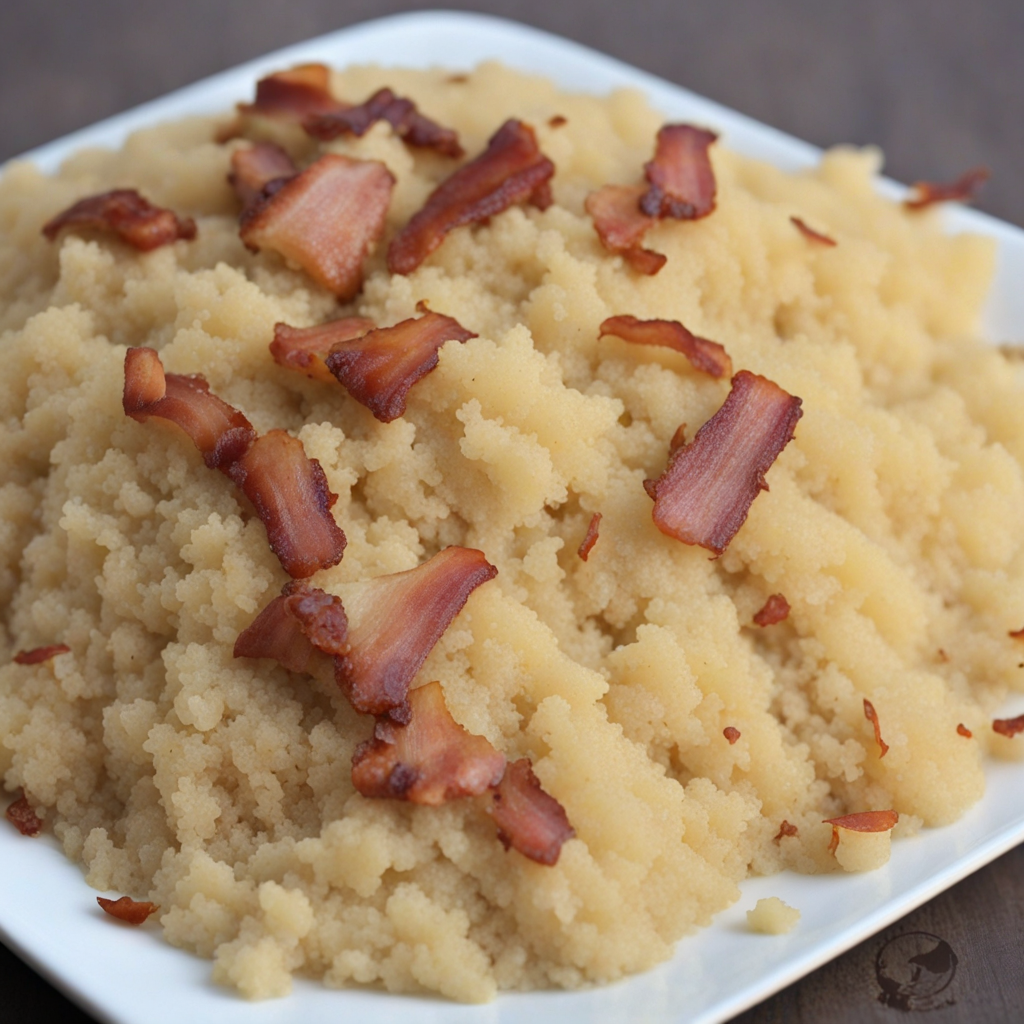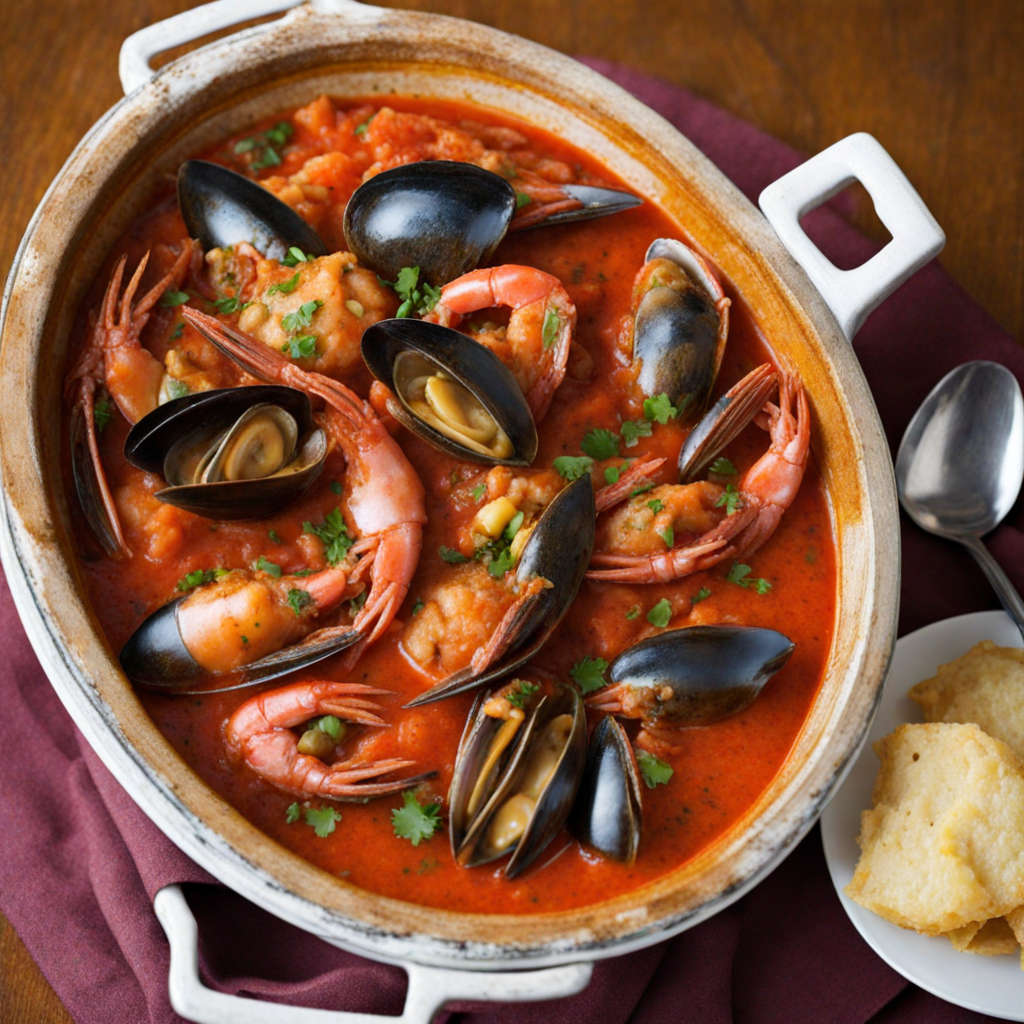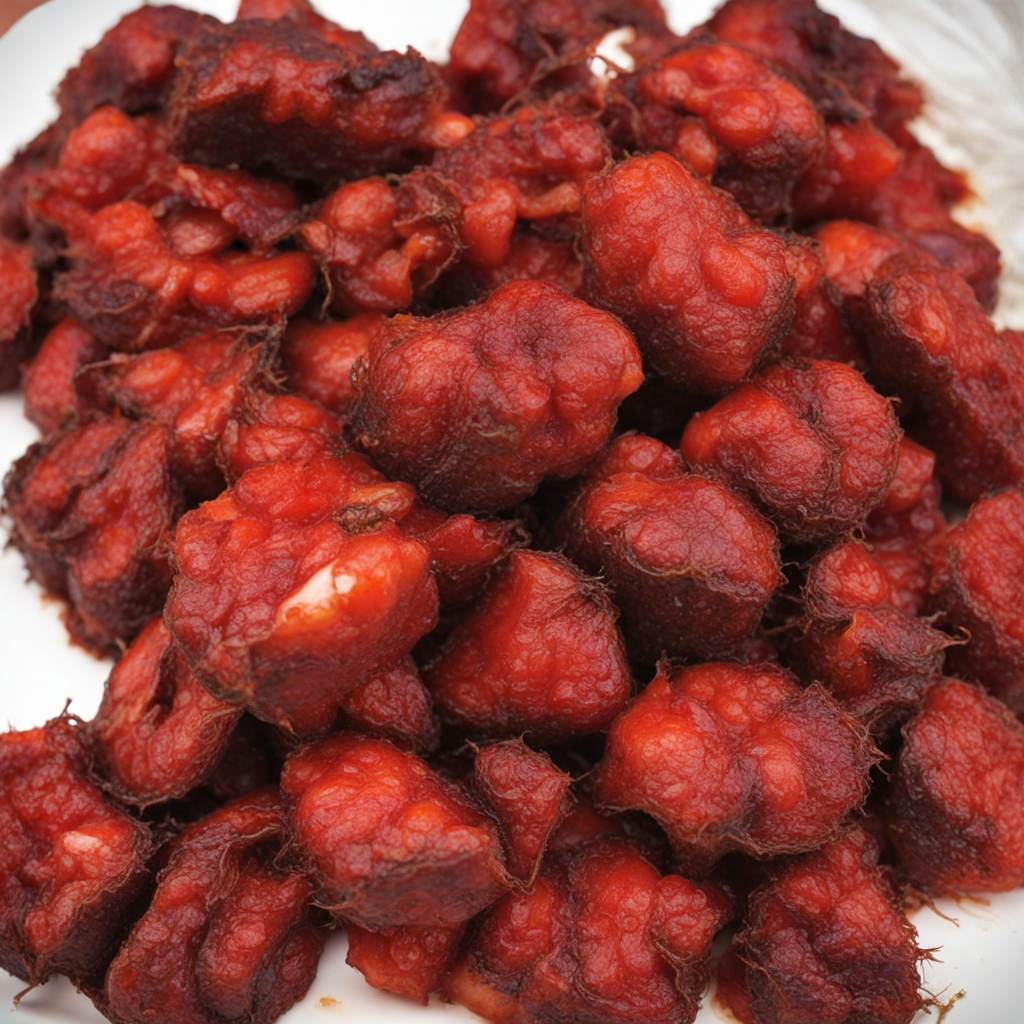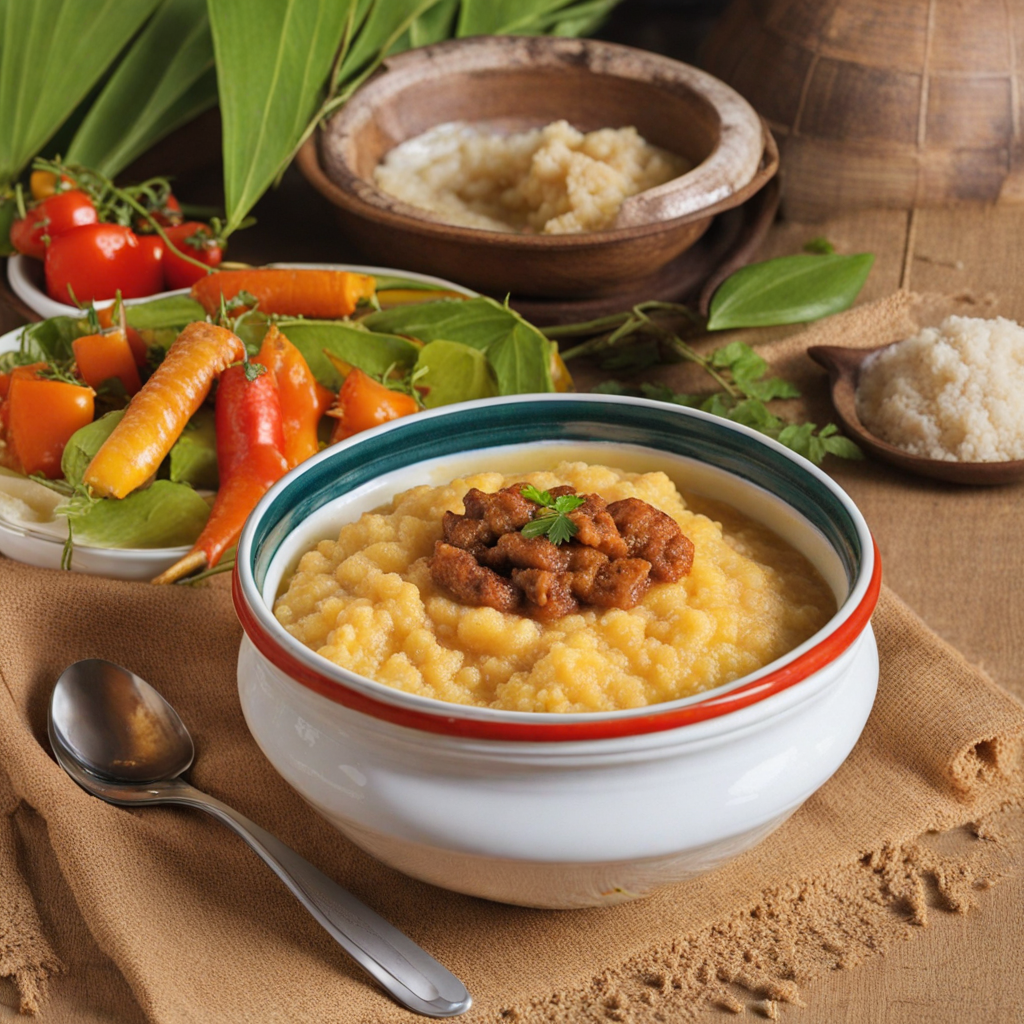Farofa
Farofa is a delightful and textured dish from Angola, celebrated for its unique and savory flavor profile. At its core, farofa consists of toasted cassava flour, which is the primary ingredient that gives it a distinctive nuttiness. The flour is often enhanced with a variety of ingredients, such as sautéed onions, garlic, and a medley of spices that contribute to its aromatic allure. The dish is versatile and can be enriched with additions like bacon, sausage, or vegetables, making it a hearty accompaniment to many meals. Farofa's crunchy texture contrasts beautifully with softer dishes, adding a satisfying element to the dining experience. The preparation of farofa is a culinary art in itself, involving the careful toasting of the cassava flour until it reaches a golden hue. This process not only enhances the flavor but also brings out the natural oils within the flour, creating a rich base for the dish. Traditionally, farofa is served alongside grilled meats, stews, or even as a stuffing for various types of vegetables, showcasing its adaptability and ability to complement a wide range of flavors. The dish is often seen as a staple in Angolan households, reflecting the country’s agricultural heritage and love for hearty, home-cooked meals. When you take a bite of farofa, the first sensation is its crunch, which gives way to the warm, toasty flavors that envelop your palate. The subtle earthiness of the cassava flour combined with the savory elements creates a harmonious balance that is both comforting and exhilarating. Whether enjoyed as part of a festive gathering or a simple family dinner, farofa embodies the spirit of Angolan cuisine, inviting you to explore its rich tapestry of tastes and textures. Each mouthful is a celebration of tradition, culture, and the joy of sharing good food with loved ones.
How It Became This Dish
The History of Farofa: A Culinary Tradition from Angola Farofa, a dish made primarily from toasted cassava flour, is a staple in Angolan cuisine, rich in history and cultural significance. Its origins can be traced back to the indigenous peoples of Angola, where cassava, a versatile root vegetable, has been cultivated for centuries. This dish not only reflects the agricultural practices of the region but also embodies the complex interplay of various cultures, including indigenous, African, and Portuguese influences that have shaped Angolan culinary traditions. #### Origins: The Indigenous Roots of Farofa Cassava (Manihot esculenta) was first domesticated in South America and eventually made its way to Africa through the transatlantic trade routes. By the time the Portuguese arrived in Angola in the late 15th century, cassava had already become a fundamental part of the diet of many indigenous groups. These communities utilized the root for its nutritional value, as it is rich in carbohydrates and can be stored for long periods, making it an ideal food source. The preparation of farofa likely emerged from these indigenous practices, where the cassava was processed into flour. Traditional methods involved peeling the cassava, boiling it, and then grating or grinding it into a fine powder. The flour was then toasted in a hot pan or over an open flame, bringing out its nutty flavor and creating a versatile ingredient that could be paired with various dishes. #### Cultural Significance: Farofa in Angolan Society Farofa is not just a food item; it is a symbol of Angolan identity and cultural heritage. It plays a vital role in communal and family gatherings, often served alongside stews, grilled meats, and vegetables. The dish is particularly prevalent during festive occasions and celebrations, such as weddings and religious ceremonies, where it is considered an essential part of the meal. In Angolan culture, food is more than sustenance; it represents social bonds and community. The act of preparing and sharing farofa is a communal experience, often involving the participation of family members, especially women. This collective effort in the kitchen fosters connections and reinforces family ties, making farofa a dish that embodies the spirit of togetherness. Moreover, farofa has evolved to incorporate various local ingredients, depending on regional preferences and availability. Common additions include vegetables like onions, garlic, and bell peppers, as well as proteins such as bacon, sausage, or eggs. These variations not only enhance the flavor and texture of the dish but also reflect the diversity within Angolan cuisine. #### Colonial Influences: The Portuguese Connection The arrival of the Portuguese in Angola brought significant changes to local culinary practices. The colonial period, which lasted from the late 15th century until Angola's independence in 1975, introduced new ingredients and cooking techniques that influenced traditional dishes, including farofa. The incorporation of spices, herbs, and cooking methods from Portuguese cuisine began to intermingle with indigenous practices, leading to unique Angolan adaptations. One noteworthy aspect of this culinary exchange is the introduction of piri-piri sauce, a spicy condiment made from chili peppers, which is often served alongside farofa. The fusion of flavors and techniques from both cultures resulted in a richer, more complex culinary landscape. Farofa became a canvas for creativity, allowing Angolan cooks to experiment with different flavors and textures while maintaining its foundational role as a side dish. #### The Evolution of Farofa: Modern Interpretations In contemporary Angola, farofa continues to be a beloved dish, but its preparation and presentation have evolved. Urbanization and globalization have influenced cooking styles and dining preferences, leading to new interpretations of traditional recipes. While the classic version remains cherished, many Angolan chefs are exploring innovative variations that incorporate international influences. For instance, some modern recipes may feature farofa as a base for gourmet dishes, topped with seafood, grilled vegetables, or exotic sauces. Likewise, the rise of health consciousness has prompted some cooks to experiment with alternative flours or gluten-free options, appealing to a broader audience while still honoring the essence of the dish. In addition to its culinary evolution, farofa has gained recognition beyond Angola's borders. As Angolan communities have spread throughout the world, they have brought their culinary traditions with them, introducing dishes like farofa to new audiences. In diaspora communities, farofa serves as a link to cultural heritage and identity, allowing individuals to connect with their roots through food. #### Farofa in the Context of Angolan Cuisine Farofa occupies a central place in the Angolan culinary tradition, often served alongside other national dishes such as moamba de galinha (chicken stew), funge (a starchy dish made from cassava or corn), and calulu (a fish or meat stew with greens). It is a versatile accompaniment that balances the richness of stews and grilled meats, providing a delightful contrast in texture and flavor. Additionally, farofa's adaptability makes it suitable for various dietary preferences. As a gluten-free dish made from cassava flour, it caters to those with gluten sensitivities while remaining hearty and satisfying. The use of local ingredients in its preparation also highlights the importance of regional agriculture and sustainable practices, promoting a deeper appreciation for the land and its resources. #### Conclusion: A Culinary Legacy The history of farofa is a testament to Angola's rich cultural tapestry, woven from indigenous traditions, colonial influences, and modern innovations. As a beloved dish that has stood the test of time, farofa continues to symbolize community, resilience, and identity for the Angolan people. It serves as a reminder of the connections forged through food, bridging generations and cultures while celebrating the unique flavors of Angola. In a world of fast food and fleeting culinary trends, farofa remains a cherished emblem of Angolan heritage, inviting everyone to partake in its rich history and the stories it tells. Whether enjoyed at a family gathering, a festive celebration, or as a comforting meal at home, farofa is more than just a dish; it is a delicious reflection of Angola's soul.
You may like
Discover local flavors from Angola







